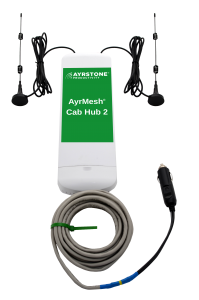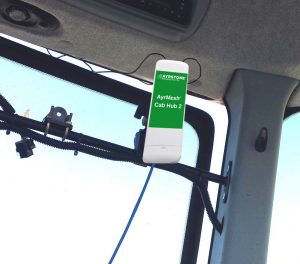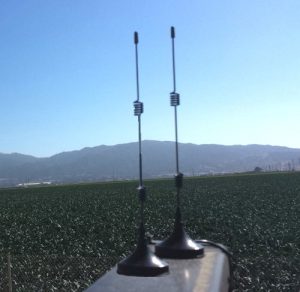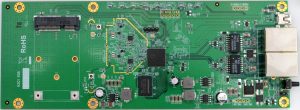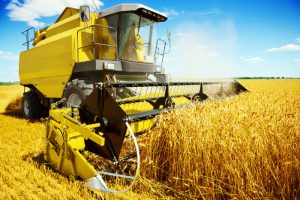The “Right to Repair” movement has been slowly gaining momentum over the last few years, as I was reminded this week by an excellent article on Bloomberg Businssweek, “Farmers Fight John Deere Over Who Gets to Fix a $800,000 Tractor”. Where I found this article much more interesting than others is that it tried to explore both sides of the issue, and it used as a source my friend Willie Vogt, who is an agriculture media industry stalwart, industry-described “agriculture technology geek”, and whose knowledge and understanding of AgTech I admire very much.
Support for “Right to Repair,” with some caveats…
So, to be absolutely clear about my own biases, I am absolutely in favor of the right to repair, of open standards and open source, and of, for lack of a better word, “hackability.” So it stands to reason that I would be fully in the camp of advocate and Nebraska engineer Kevin Kenney and the other “Right to Repair” folks, and I am – but with a few important caveats that keep me actually more closely aligned with Willie. I think this deserves some serious explanation.
Having the right to do something carries with it the obligation to do it responsibly. In this article, Willie is pointing out that an enormous amount of damage can be done by someone hacking away with the very sensitive control system for a large, complex piece of equipment like a combine. And I agree. If you disable the emissions controls on a piece of equipment you are just being a selfish, obnoxious neighbor, polluting your property and that of your neighbors for your own gain. If you disable the safety features, you are literally risking the lift of anyone who comes near it. So, when Kevin talks about the right to “hot rod” his equipment, I bristle: I think he should have the right to “hot rod” his combine if he’s about to take it out to a combine derby, or especially being able to run the combine during harvest season while he’s waiting for a part, but I certainly don’t want him running a combine continuously all fall with its emissions system compromised. Similarly with the safety components – I don’t mind him being able to bypass a “port open” sensor while he’s getting a spare part, but there should be some requirement to (1) label it clearly for the sake of anyone who comes in close proximity of the machine, and (2) get it fixed as quickly as possible.
One of the more nuanced examples in the article, however, is one about a line of Deere combines that are mechanically identical but sold at different horsepower ratings limited only by software. On one hand, this seems inherently dishonest: you buy a machine that’s capable of a certain level of performance, but you are artificially prevented from accessing that performance. On the other hand, it seems completely honest: you paid an appropriate price for a level of performance that Deere successfully provided.
Influence from Other Industries
Modern “Software As A Service” platforms, like Salesforce.com or Oracle NetSuite, have introduced this concept widely: it means that a small business can access the same powerful software as large businesses, and each with the particular modules they need, and each paying an appropriate price for the benefit they get from it. The software runs in the same browser window on the same computer, whether they are paying $100 per month or $100,000. So why not sell farm equipment the same way: different versions and options of software running on the same hardware at the customer site? That way the customer can even “upgrade” the machine or turn on additional features as they are needed, saving the farmer money and allowing the dealer to deliver new capability as the farmer requires without having to deliver additional hardware.
The problem is, of course, that business model only works if the vendor has complete control over the software – the users can’t modify it, and, if something goes wrong, they are completely at the mercy of the vendor. So this business model necessarily conflicts with the right to repair – it is only applicable for equipment that is rented or leased, not for equipment that is purchased.
Need for Open Source
There is a fairly radical solution: the source for all this embedded software in devices we purchase – from smartphones to tractors – should be available freely. Clearly, this would enable people to do things that are stupid, inconsiderate, and dangerous. It would also allow people to understand, repair, and maintain their devices indefinitely, protecting the investment they make in these devices that are frequently critical in running customers’ businesses.
Of course, there are other approaches to the particular problems of the Right to Repair farm machinery. Manufacturers offering complete diagnostic software to all owners is a good first step, enabling at least complete troubleshooting if not necessarily the ability to repair or modify the machine. Providing software that will allow someone to bypass or disable a sensor, for instance, for a period of time might also help a lot.
Networked Devices Need Lifelong Updates
Looking forward, however, the problems with farm equipment and other electronic devices like smartphones start to intersect as farm equipment becomes increasingly network-connected, meaning they can be the target of online hackers. Like smartphones, farm equipment will need to be continuously updated long after there is no economic incentive for the manufacturer to do so. Without some form of open-source software to run on these machines, they’ll be vulnerable to online hacking that can render them useless.
Where Ayrstone Stands
For ourselves, we use open-source software and open standards: you can replace the firmware on any Ayrstone product with the open-source packages from OpenWRT, DD-WRT, etc., and you can replace an AyrMesh Hub with another device that uses standard 802.11s meshing. We’re not competing by “trapping” you into our technology; we’re competing by offering the best, easiest-to-use products and support for our market: wireless networking for farms and ranches.
We get it – nobody wants to collect a new “doorstop” because it can’t have the software updated, whether it’s a $300 WiFi access point or a $300,000 tractor. By making use of standards instead of using proprietary technology, we protect the investment you make in our products and all the wireless technology you use on the farm. We’re hoping our example will influence some of the other vendors of agricultural technology, large and small.
